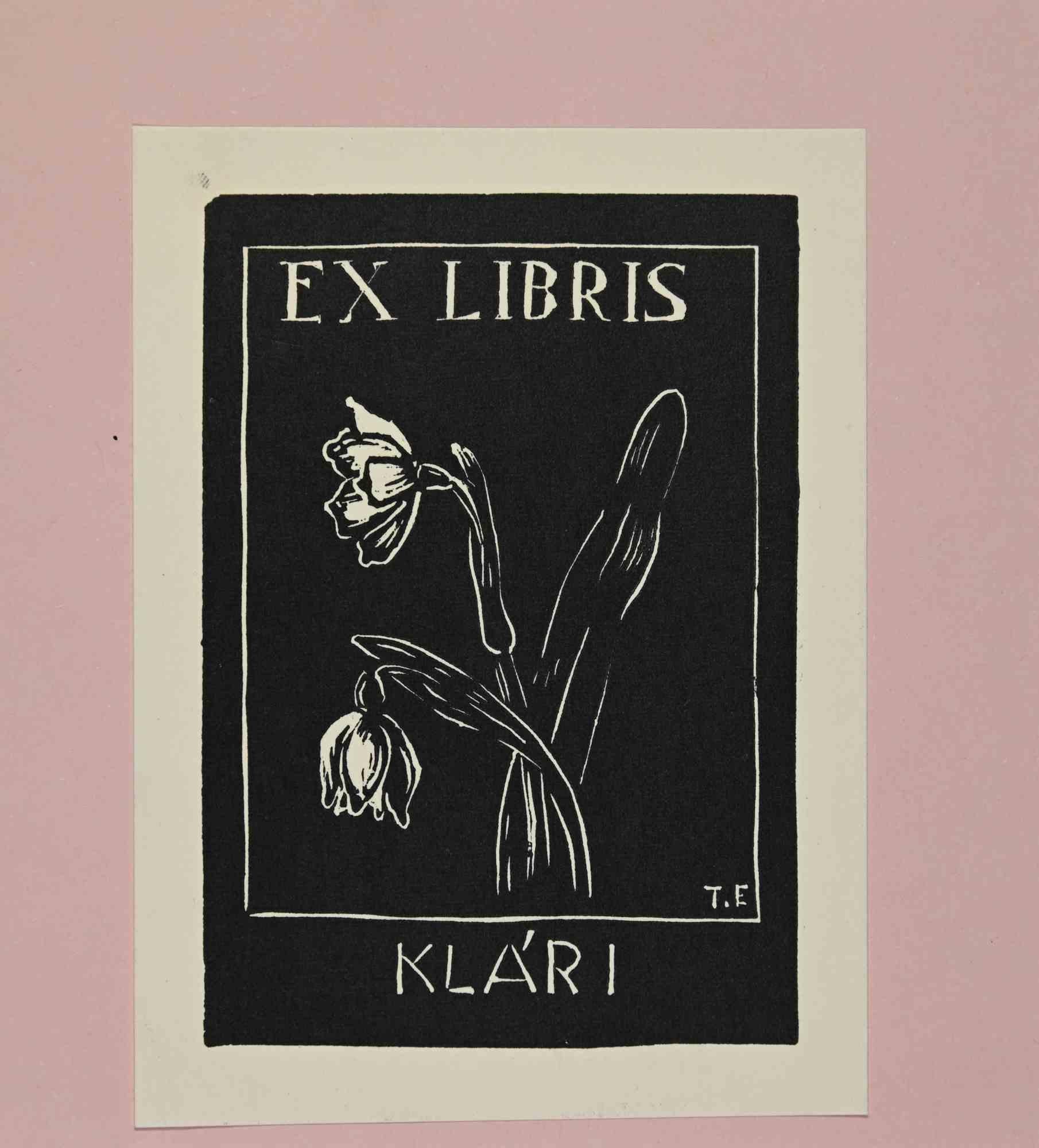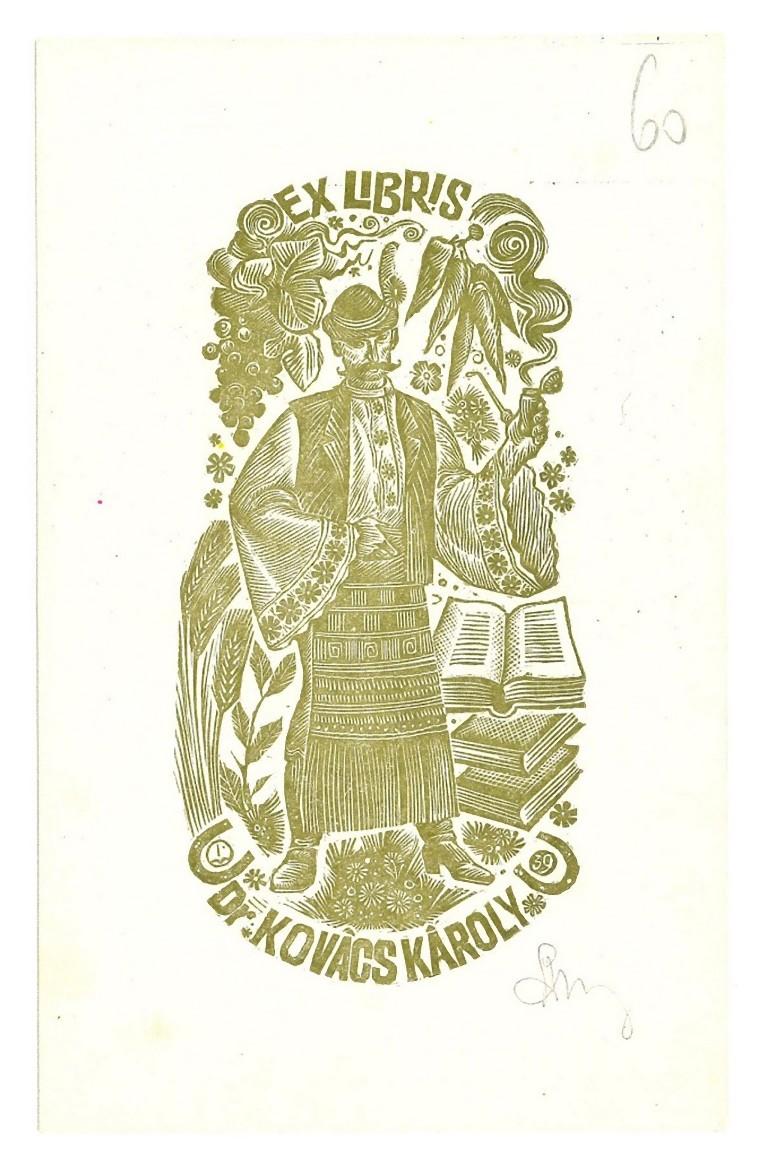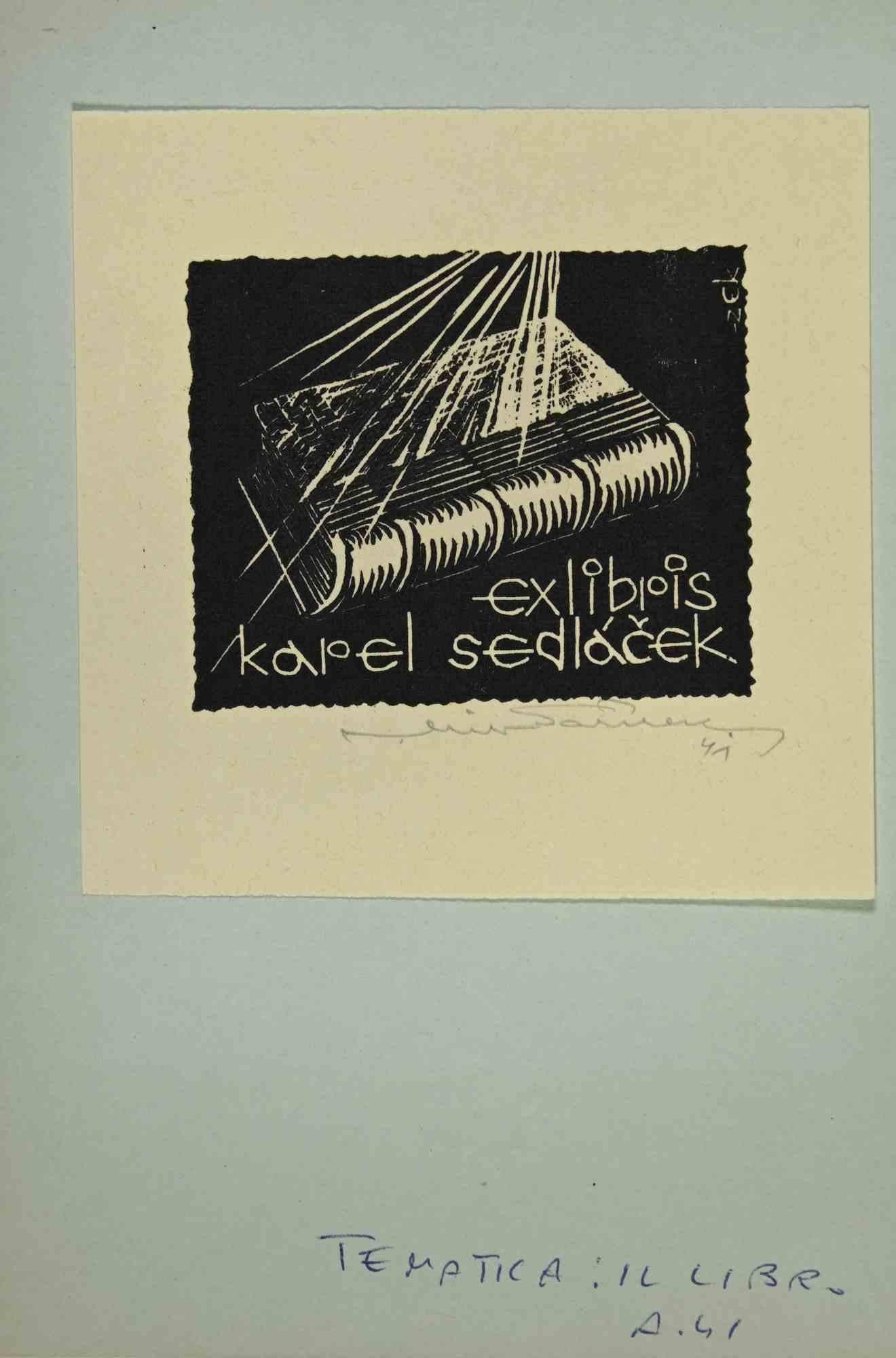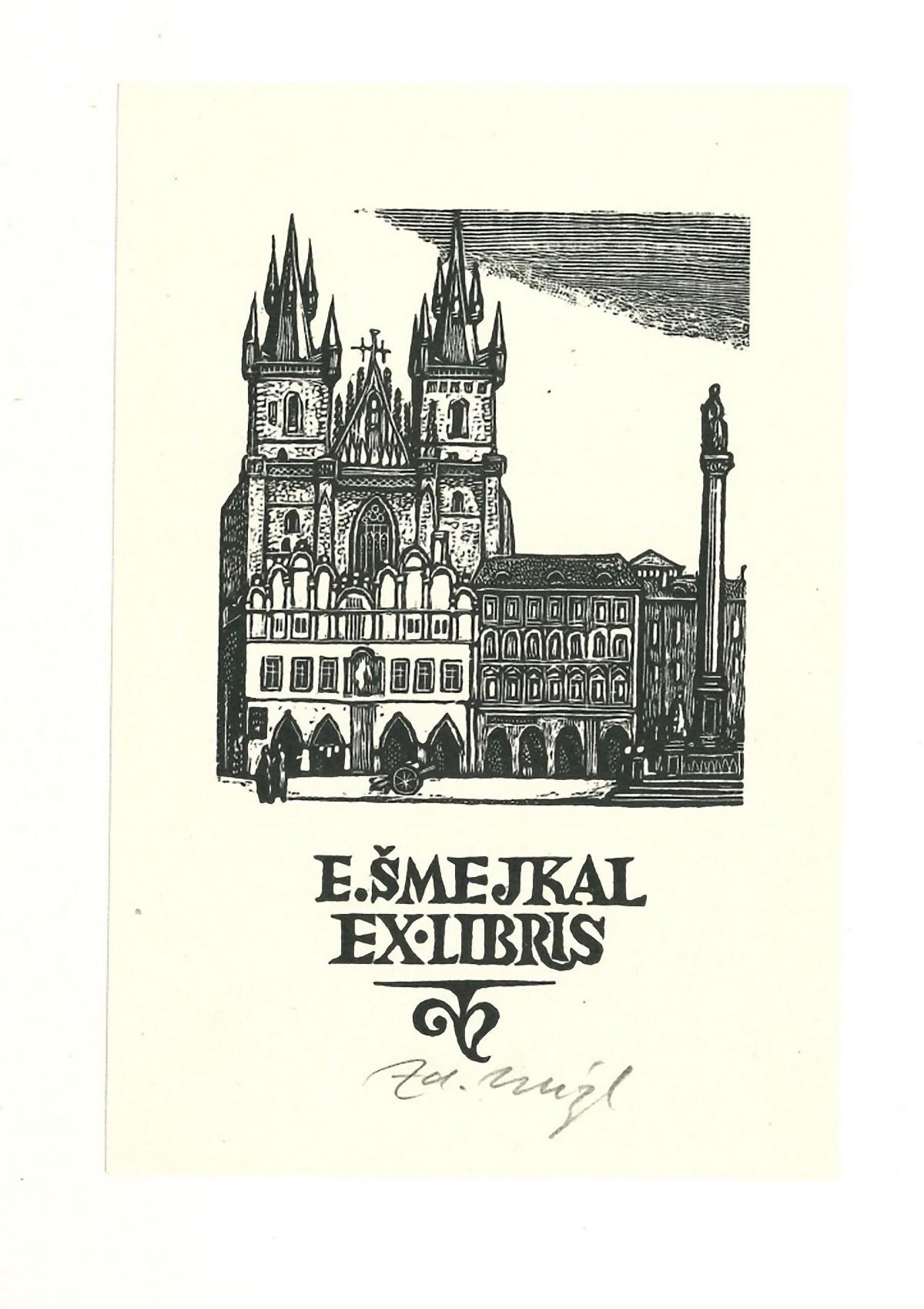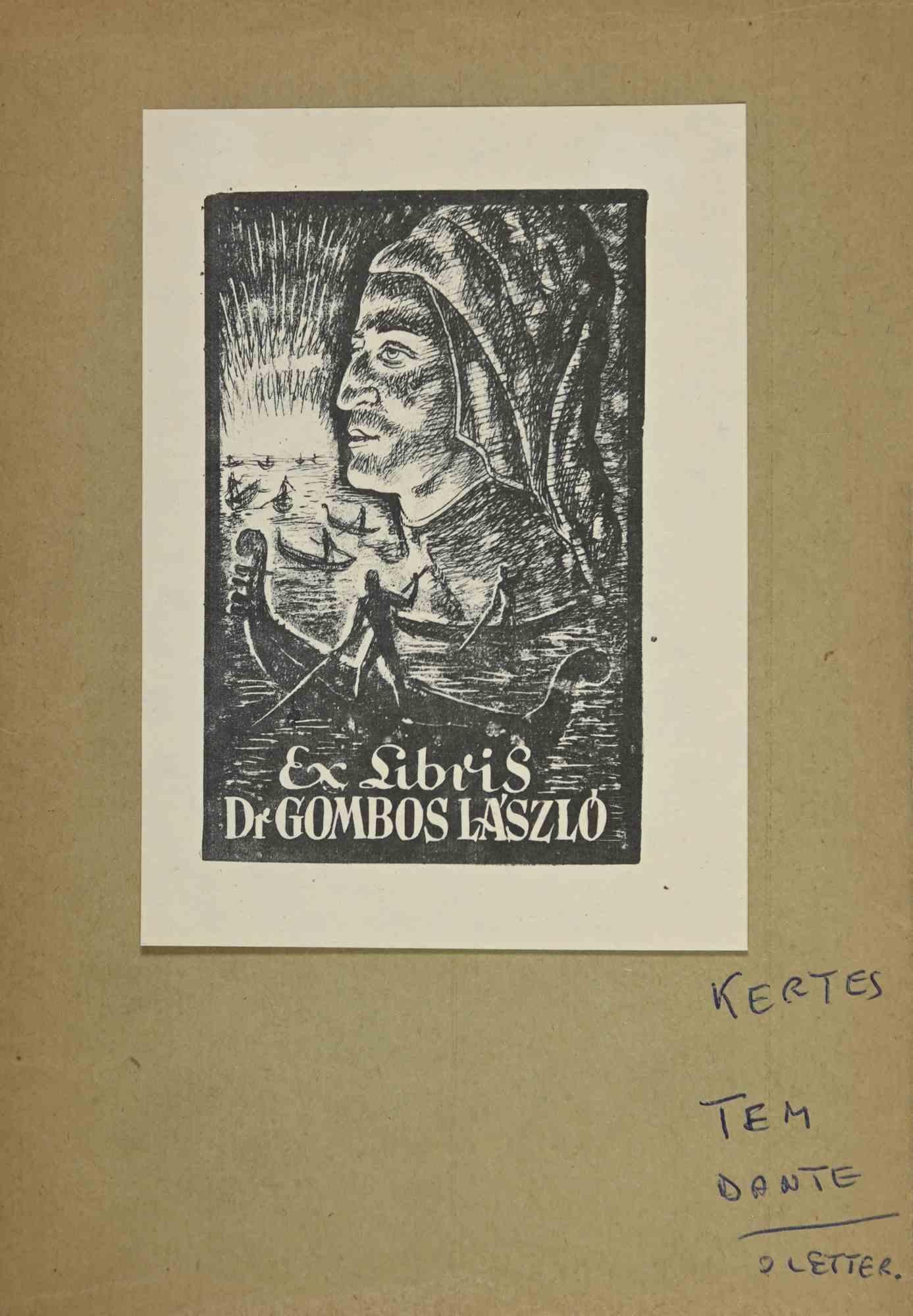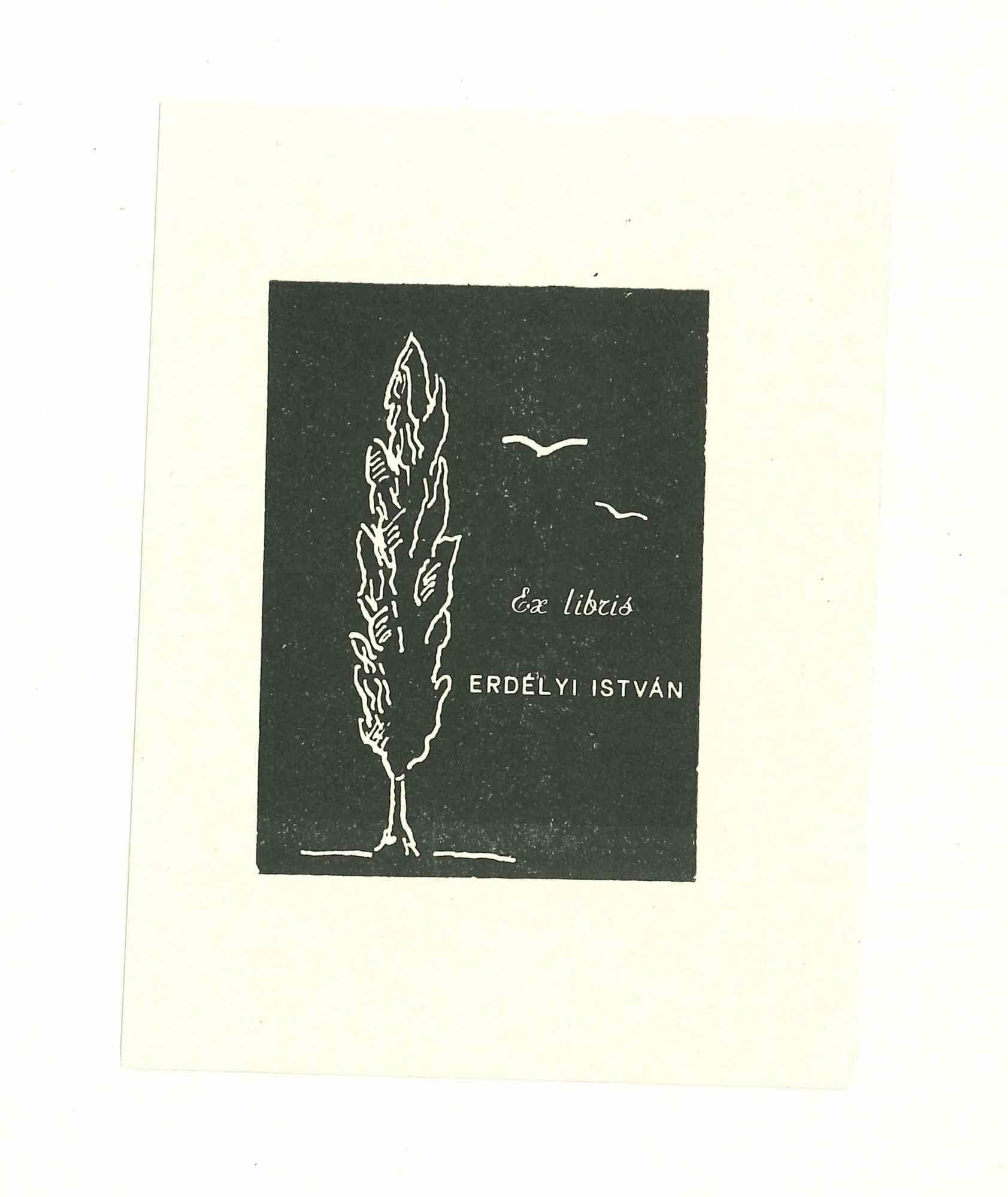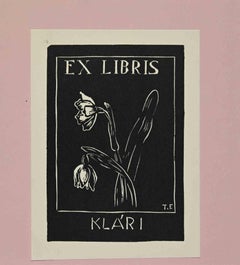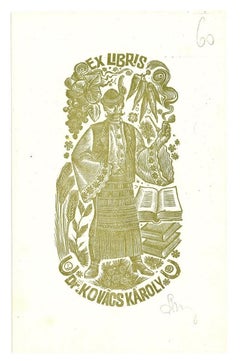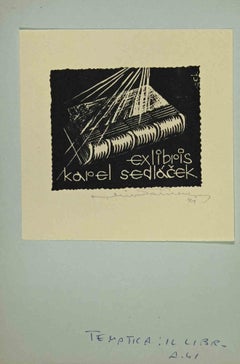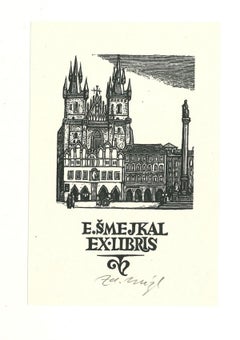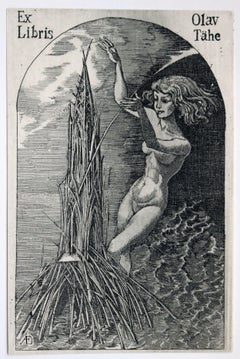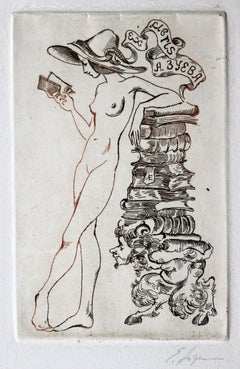Items Similar to Ex Libris Kellemis - Original Woodcut Print - Mid-20th Century
Want more images or videos?
Request additional images or videos from the seller
1 of 2
UnknownEx Libris Kellemis - Original Woodcut Print - Mid-20th CenturyMid-20th Century
Mid-20th Century
$215.65
£160.04
€180
CA$297.17
A$327.03
CHF 171.49
MX$3,968.93
NOK 2,143.66
SEK 2,029.45
DKK 1,370.38
About the Item
Ex Libris Kellemis is an original Contemporary Artwork realized in the mid-20th Century.
Original Colored woodcut on ivory-colored paper. An inscription is present on the lower margin.
The work is glued on cardboard.
Total dimensions: 21 x 15 cm.
Mint conditions.
The artwork represents a minimalistic, clean design, a figure behind a shape with a wings on the lower, dreamy-like world, through preciseness and congruous colors.
- Creation Year:Mid-20th Century
- Dimensions:Height: 4.14 in (10.5 cm)Width: 2.76 in (7 cm)Depth: 0.04 in (1 mm)
- Medium:
- Period:
- Framing:Framing Options Available
- Condition:Insurance may be requested by customers as additional service, contact us for more information.
- Gallery Location:Roma, IT
- Reference Number:Seller: M-1187971stDibs: LU65037998712
About the Seller
4.9
Platinum Seller
Premium sellers with a 4.7+ rating and 24-hour response times
1stDibs seller since 2017
7,707 sales on 1stDibs
Typical response time: 2 hours
- ShippingRetrieving quote...Shipping from: Grasse, France
- Return Policy
Authenticity Guarantee
In the unlikely event there’s an issue with an item’s authenticity, contact us within 1 year for a full refund. DetailsMoney-Back Guarantee
If your item is not as described, is damaged in transit, or does not arrive, contact us within 7 days for a full refund. Details24-Hour Cancellation
You have a 24-hour grace period in which to reconsider your purchase, with no questions asked.Vetted Professional Sellers
Our world-class sellers must adhere to strict standards for service and quality, maintaining the integrity of our listings.Price-Match Guarantee
If you find that a seller listed the same item for a lower price elsewhere, we’ll match it.Trusted Global Delivery
Our best-in-class carrier network provides specialized shipping options worldwide, including custom delivery.More From This Seller
View AllEx Libris - Klàri - woodcut - Mid 20th Century
Located in Roma, IT
Ex Libris - Klàri is an Artwork realized in Mid 20th Century.
Woodcut print on paper.
The work is glued on pink cardboard.
Total dimensions: 16.5x16 cm.
Good conditions.
The art...
Category
Mid-20th Century Modern Figurative Prints
Materials
Woodcut
Ex Libris Dr. Kovacs Karoly - Original Woodcut Print - 1950s
Located in Roma, IT
Ex Libris Dr. Kovacs Karoly is an original Modern Artwork realized in the mid-20th Century.
Original woodcut print on ivory-colored paper. Hand-signed by the artist in pencil on the...
Category
1950s More Prints
Materials
Woodcut
Ex-Libris - Kapel - woodcut - Mid 20th Century
Located in Roma, IT
Ex-Libris - Kapel is an Artwork realized in Mid 20th Century.
Woodcut on paper. Hand signed in pencil.
Good conditions.
The artwork represents a minimalistic, clean design, throug...
Category
Mid-20th Century Modern Figurative Prints
Materials
Woodcut
Ex Libris Smejkal - Original Woodcut Print - Mid-20th Century
Located in Roma, IT
Ex Libris Smejkal is an original Contemporary Artwork realized in the mid-20th Century.
Original B/W Woodcut Print on ivory-colored paper.
The work is glued on cardboard. Hand-s...
Category
Mid-20th Century Modern Figurative Prints
Materials
Woodcut
Ex-Libris - Dr.Gombos Laszlo - woodcut - Mid 20th Century
Located in Roma, IT
Ex-Libris - Dr.Gombos Laszlo is an Artwork realized in Mid 20th Century.
Woodcut on paper.
Good conditions.
The artwork represents a minimalistic, clean design, through preciseness.
Category
Mid-20th Century Modern Figurative Prints
Materials
Woodcut
Ex Libris Istvan - Original Woodcut - 1970s
Located in Roma, IT
Ex Libris Istvan is an original Artwork realized in the half of the 20th Century.
Original B/W woodcut print on ivory-colored paper.
The work is glued on cardboard.
Total dimen...
Category
1970s Modern Figurative Prints
Materials
Woodcut
You May Also Like
Ex libris. Paper, woodcut, 11x7cm
Located in Riga, LV
Ex libris Olav Tähe
Paper, woodcut, 11x7cm
Category
1990s Jugendstil Nude Prints
Materials
Paper, Woodcut
$172 Sale Price
20% Off
Ex Libris. Paper, etching, 11x7 cm
Located in Riga, LV
Ex Libris A. Zuyeva
Paper, etching, 11x7 cm
Category
1990s Jugendstil Nude Prints
Materials
Paper, Etching
$172 Sale Price
20% Off
Afterword. Nr. 2.1984. Paper, linocut, 20x34 cm
By Dainis Rozkalns
Located in Riga, LV
Afterword. Nr. 2. 1984. Paper, linocut, 20x34 cm
imprint size 12x25 cm total page size 20x34cm
Dainis Rozkalns (1928 - 2018)
Artist, graphic artist, illustrator of folklore and fic...
Category
1980s Folk Art Interior Prints
Materials
Paper, Linocut
$186 Sale Price
20% Off
Afterword. 1984. Paper, linocut, 20x34 cm
By Dainis Rozkalns
Located in Riga, LV
Afterword. 1984. Paper, linocut, 20x34 cm
imprint size 12x25 cm total page size 20x34cm
Dainis Rozkalns (1928 - 2018)
Artist, graphic artist, illustrator of folklore and fiction pu...
Category
1980s Folk Art Interior Prints
Materials
Paper, Linocut
$187 Sale Price
20% Off
M. Karstens - 20th Century Woodcut, The Artist In Situ
Located in Corsham, GB
Original woodcut. Portrait of the artist in situ. Pencil signed and dated to the lower margin. On Japanese paper.
Category
20th Century Portrait Prints
Materials
Woodcut
"Raskolnikow" original linocut
Located in Henderson, NV
Medium: original linoleum cut. Printed in 1920 for Das Kunstblatt, and published in Berlin by Verlag Gustav Kiepenheuer. Image size: 6 1/4 x 4 1/4 inches (160 x 105mm). Sheet size: 1...
Category
1920s Expressionist Prints and Multiples
Materials
Linocut
More Ways To Browse
Stained Glass Rondels
Studio Ghibli
Toussaint Watches
Triumph Bicycles
Trooping The Colour Vintage Poster
Vintage Airborne Posters
Vintage Bahamas Travel Posters
Vintage Celtics Poster
Vintage Dr Gonzo
Vintage Food And Wine Posters
Vintage Formula Ford Racing
Vintage Horror Movie Posters Uk
Vintage Ibm Poster
Vintage Indian Film Posters
Vintage Jeep Poster
Vintage Lambretta Scooter
Vintage Little Bo Peep
Vintage Lotus F1
